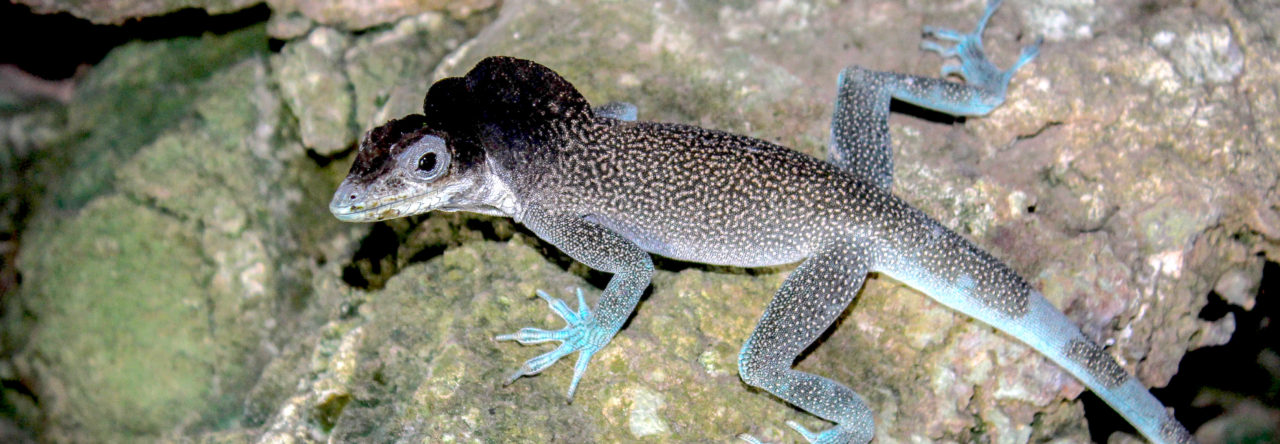In the mid-1980’s, Guyer and Savage proposed dividing Anolis into five genera. This proposal has mostly been rejected by the anole community, for reasons detailed in Poe (2004), Lizards in an Evolutionary Tree and the Wikipedia Norops page. The main reason is that although Guyer and Savage’s proposed genus Norops is monophyletic, all of the other proposed genera are not. Moreover, given the uncertainty that still exists about relationships at the base of the anole tree, sundering anoles into well-supported monophyletic subclades is still not possible. Finally, in Guyer and Savage’s initial paper, Anolis sensu lato was found to be monophyletic—so why bother? Even though we now know that Chamaeleolis, Chamaelinorops, and Phenacosaurus arose from within Anolis, it is much simpler to sink these genera into Anolis rather than to try to break anoles into umpteen different genera—many poorly supported.
Despite these points, and the general support for retention of an unsullied Anolis, support for Norops has one last redoubt, in Central America, and with particular strength in Costa Rica. There, the use of Norops is nearly ubiquitous, as evident in the Reptiles of Costa Rica flashcard pictured above (and for sale throughout the country). A variety of reasons—historical, sociological, and biogeographic—probably explain the warmth for Norops there and antipathy elsewhere. Certainly, Norops dominates the anole fauna of Central America, whereas it is less dominant in South America and more of a bit player in the Caribbean. In addition, the legacy of Jay Savage and his students is strong in Central America, whereas much Caribbean anole work can be traced back to Ernest Williams’ academic progeny.
Regardless, what will the future hold? Will the use of Norops as a genus name be swept away by the tide of arguments cited above? Or, will the trend of taxonomic splitting so prevalent elsewhere in the systematic world—both herpetological and otherwise—visit anoles and lead to a resurgence of Noropsomania? Somehow, I think we have not seen the end of efforts to divvy up anoles.
- Third Mexican Amber Anolis Lizard Discovered - January 14, 2025
- Anolis Lizard Research Paves the Way for Advances in Treatment of Human Prostate Cancer - January 10, 2025
- When Two Lizards Meet for the First Time, Scientists Witness Evolution in Action - January 3, 2025



rglor
I’m sure we haven’t seen the last of Norops!
rmtzgr
to accept the genus Norops has to suppose then that that group of Anoles is paraphyletic